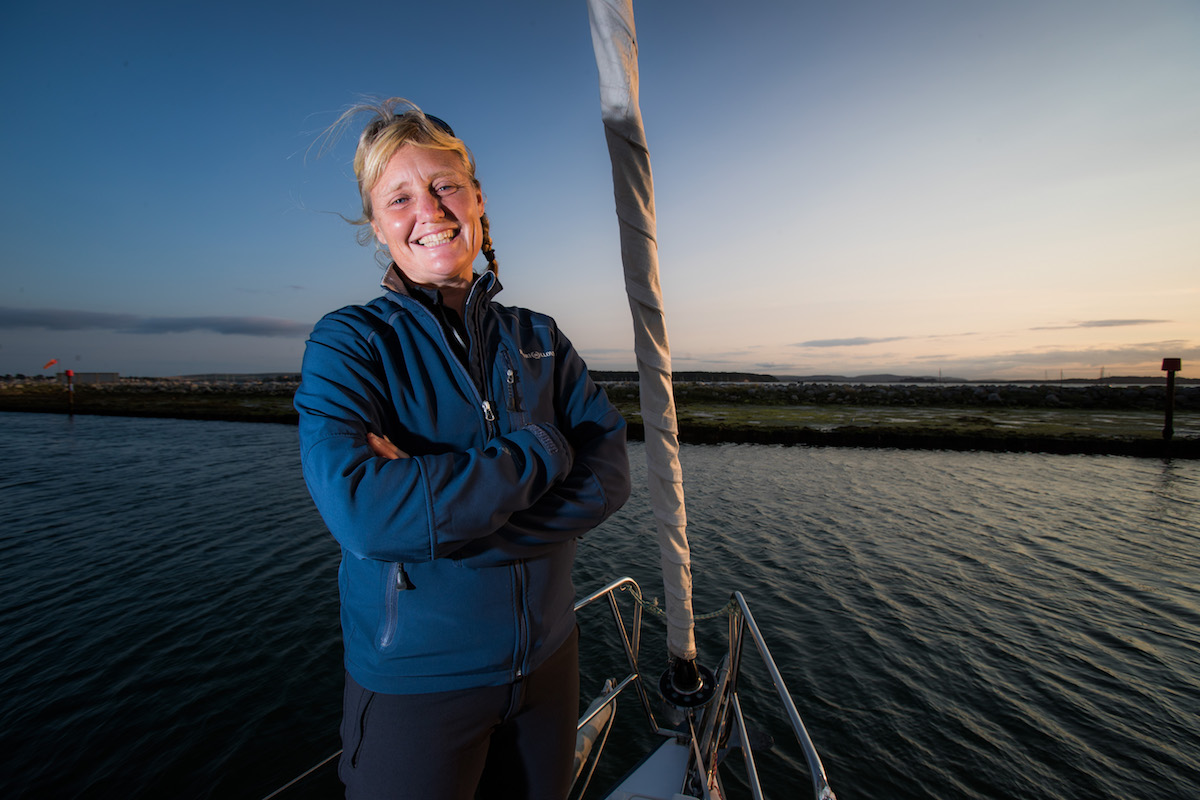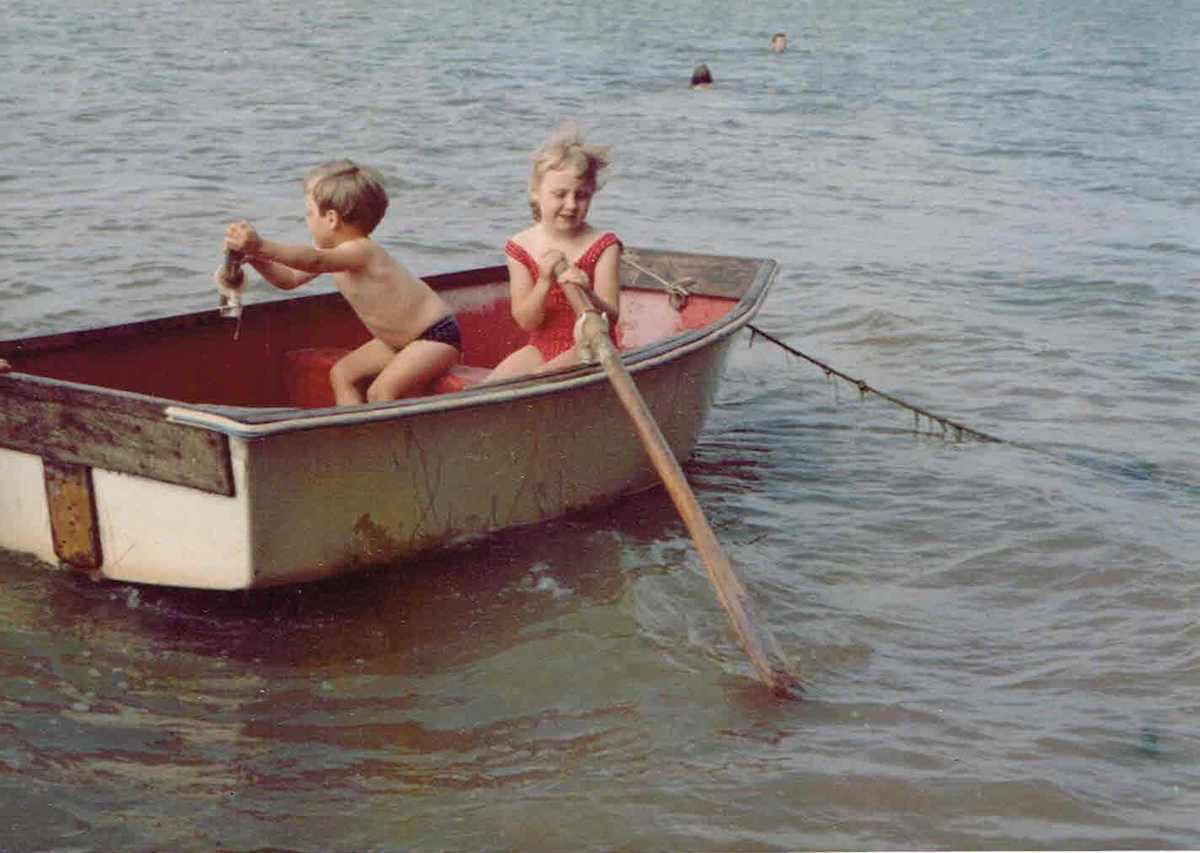This Sunday, British sailor Pip Hare sets sail on her solo, non-stop round-the-world race, the Vendée Globe. She tells Ali Wood about her Swallows and Amazons-style upbringing, life as a liveaboard and her non-conventional route into professional sailing
“It’s not hard being on your own. Or even being in the middle of the ocean. It’s learning to sleep that’s so tough,” confides British sailor Pip Hare, ahead of her 2020 Vendée Globe attempt on her IMOCA 60, Medallia.
“You reach the point when you’re falling off a cliff, and lose your ability to problem-solve. You literally have to lie on the floor and sleep. It’s terrifying the first couple of days – when the boat’s going on its own – but you get used to it.”
Surely learning to sleep – something we all do from birth – can’t be that hard? But factor in that it’s blowing 40 knots, you’re mid-Atlantic and have just 10 minutes before you’re back on deck to gybe over 500 square metres of sail, and you can start to see the difficulty.
On November 8th, when Pip sets sail on the 24,000-mile solo round-the-world race, she’ll be looking to sleep no more than 40 minutes at a time; often just five or 10 minutes, and never more than four hours in a day.
“When racing solo your sleep becomes very strategic. You’re always looking ahead, banking it where you can, before a front or changing sails.”

Sleep training was just one of many challenges the 46-year-old sailing instructor faced when she made the switch to professional racing.
However, with five qualification races under her belt, including the Transat Jacques Vabre – a race to Brazil – she’s well prepared. Even so, she knows what lies ahead is going to be tough.
The Vendée is the one of the most elite sporting events in the world, though Pip’s quick to point out it’s NOT the ‘Everest of Sailing’; that just doesn’t do it justice. Over 5,000 people have climbed Everest, but fewer than 100 have completed the Vendée.
“Only six of them were women,” she adds. “That’s fewer people than have walked on the moon.”
The enormity of the campaign – which saw her up at 4am every day planning, training, sailing, fundraising – was something Pip didn’t take lightly.
“It’s taken me 10 years to build up the skills and confidence to take on this challenge. I’m not a naturally confident person and I need to prove to myself that I’m more than capable of something before I progress onto the next step.”

As a child messing about on the family folkboat with her brothers and sisters, the idea of becoming a professional sailor couldn’t have been further from her mind.
“We didn’t go that far to be honest. There were six of us on that small boat – two adults and four children. It was a bit of a squeeze!”

Later, the family bought a Moody 33 and, together with Pip’s grandparents (making that eight on board!), sailed across to the Ijsselmeer: “We’d turn up, moor on the pontoon and my parents wouldn’t see us for days! It was like Swallows and Amazons. Sailing for us was a wild existence.”

The thirst for adventure stayed with Pip throughout her teenage years, and though she did “a bit of dinghy sailing” on Grafham Water, the idea of racing never grabbed her. At 18 she obtained her RYA Yachtmaster qualification, and during a year out from university secured an eight-month crew position on a tall ship bound for the Canaries.
It was then she realised she was destined for a career on the water. Though a Merchant Navy Cadetship was out of the question – she’d have failed the eyesight test – she won an apprenticeship with a South Coast sailing school.
“I was based in the Hamble and would see everybody going out on Sunday mornings to race,” she recalls. “I wanted to be a part of that so started crewing.”
Unlike many of her racing peers, who followed RYA schemes, Pip’s focus was on having liveaboard adventures. Together with her partner she bought a Lightwave 395 cruiser-racer called The Shed, and spent five years sailing around the Med, the Caribbean and South America, right down to Patagonia.
“We lived on a shoestring but invested heavily in ground tackle, a massive anchor, wind generator and watermaker – it was great to be totally self-sufficient. We’d travel the world, fly back to the UK and work a bit, then return to the boat.”
Later, Pip would make more and more passages alone, and it was during a solo crossing back from South America that her mind wandered to racing.
“All of this time, I’d been sailing and working and doing all these things, I was always obsessed with Vendée Globe,” she says. “I looked at the people out there, and those that had made it, and believed if I had any aptitude, it was for short-handed sailing.”
Inspired by Florence
As a child, she’d been inspired by French sailor Florence Arthaud, who despite being paralysed at the age of 17, made a full recovery and went on to win several world-class yacht races, as well as setting a new solo world speed record across the North Atlantic.
“I remember reading about Florence in yachting magazines. She was competing against the men – giving them a run for their money. You didn’t see women in ocean teams back then.”
But where to start? As Pip puts it: “You don’t just get up and think, I’m going to sail a 60ft IMOCA around the world.” She spent a long time not knowing how to take the first step… “being on the outside looking in,” she recalls.
It was 2009, an OSTAR year, and Pip was crewing in Cowes Week for a company she’d done corporate skippering for. She mentioned the solo transatlantic race, and it just so happened that the financial director’s father had done it a few years ago. They offered to sponsor her so she entered The Shed.
“I’d already proved to myself first that I was capable of crossing an ocean by myself. I knew I was a good sailor with good seamanship skills. I could keep the boat safe, but how hard could I push myself?”
The 58-day, 7,500-mile race confirmed what Pip had hoped: “I pushed myself to the edge and discovered my appetite for risk is right up there,” she says.
Loneliness didn’t even creep into it; she was too busy, though admits she talked to herself a lot.
“It’s nice to hear a voice when you’re alone, though most of what I say isn’t very nice! Sometimes a full-blown expletive is the only way to let out how you feel about life at that moment.”
After the OSTAR Pip did the two-handed Round Britain and Ireland, still on The Shed which she lived on for 13 years. She then switched to competing in Mini Transat races, but even so, the idea of becoming a professional racer felt like an impossible dream.
“In the UK this was a hard thing to do,” she explains. “There’s no Olympic programme you feed into, tagging you onto this squad or that one. There are very few peers you can train with.”
Instead, Pip moved to France, inspired by the country’s vast legacy of world-class sailors and famous races.
“They have the best community and progressive training environment,” she says. “Effectively a load of sailors get together and share funds and resources. They get themselves coaches. There are always four or five people with similar boats on the dock you can train with; everybody’s moving together.”
Training every day
After training in France, Pip spent the final years of her campaign in Poole in the UK. She acquired Superbigou – named after a French cartoon character – in 2018. Built by Swiss skipper Bernard Stamm in 1999, the boat took Stamm to victory in the Around Alone in 2002-03 and Velux Five Oceans in 2006-07.

Although almost 20 years old, Pip’s IMOCA 60 (now named Medallia after her sponsor) proved to be a worthy contender in the Fastnet Race, where she competed with the holder of the world speed record, Paul Larsen.
“At one point we were leading the fleet,” she laughs. “My computer had crashed. I have an old boat, an inherited sail wardrobe and I was navigating on my phone… And yeah, we’re on a scratch budget and we still led the fleet!”
With every successful race, Pip has felt more and more ready for what’s to come. The skill and energy required to sail a 60ft yacht solo, non-stop around the world is immense, but also important to Pip is that the race gains recognition outside of the sailing community.
“The Vendée Globe is so much more than sailing. In fact, the sailing element locks people out. It’s three months of solid performance. It’s about problem solving, and capturing people’s imaginations. Sailing is only the vehicle; the experiences are common to all humans. It’s going to be incredible and I’m so looking forward to it.”




